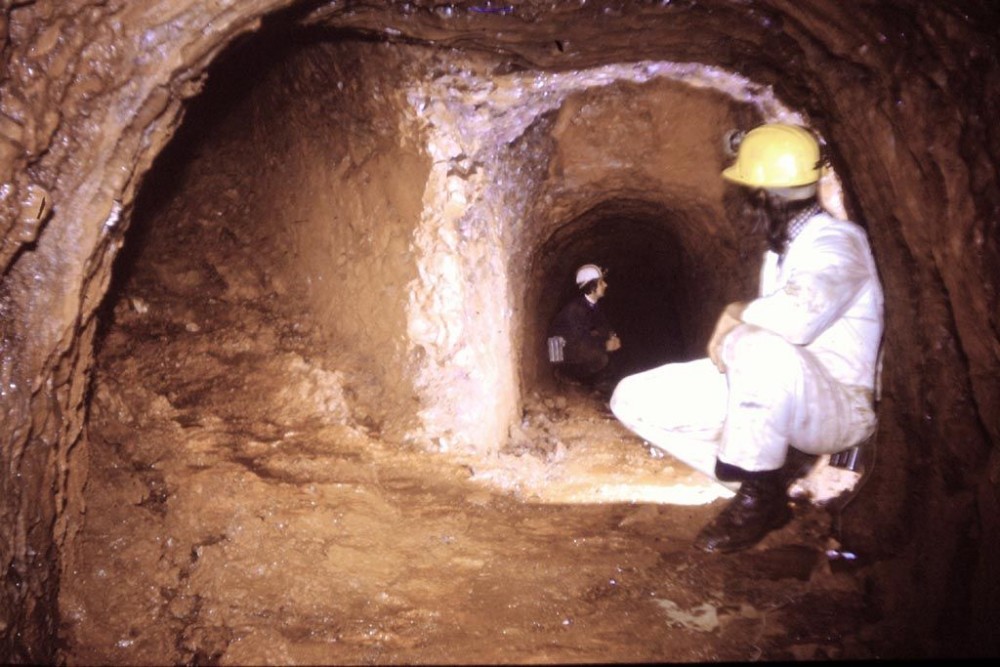Evishacrow Mine, Co. Antrim
These mines, clearly visible from the main road just above Cargan, were opened by Mr. Charles
Chambers of Clough about 1869 for iron ore. Further trials were made on the north side of the
hill but little is known of these though a flooded adit has been found and the original plans still
exist but there is no link with the other mines. The hill itself is honeycombed with workings with
evidence from fox prints of a 'back door'. The mines were closed for many years (1890-1897) and then reopened by the Crommelin Mining Co. Ltd. in 1897 mainly for bauxite. The Nos. 3 and 4 adits
were finally closed on 31st December 1923 because of the company's inability to work them at a profit. The British Portland Cement Manufacturing Co. then operated the bauxite mine from 1925 for the manufacture of cement at Magheramorne but this ceased on 7th August 1926 because the mineral proved unsuitable for that purpose.
These mines too were served by the ill-fated Wire Tramway and after the coming of the narrow
gauge railway a short siding was built to carry the ore to the main line nearby. Mr. R. A. Watson,
C.E.M.E., in his report of the mining industry in the Dublin University Magazine of January 1874
was much impressed by the quality of ore in Evishacrow stating that the nodules of iron in the
ore had the appearance 'when split of cast steel’. Two adits to the Evishacrow Mine are still open but are at different heights on the hillside and are not thought to be linked. Much of the lower mine workings have collapsed especially in the vicinity of the small quarry visible from the road but from the extent of debris within the mine it seems that dynamiting in an attempt to seal the mine was the cause. Access may still be possible (I haven't been in it since the 70's so it's probably closed up now) and beyond the first 100 feet or so the rock is sound. Mining was on two levels with most of the workings in the upper level. Many of the passages are very low and the mine also features
steeply inclined roads and holes in the roof giving access to upper workings or enabling ore to
be thrown down into hutches below. The upper workings are never far below the surface for
most of the adits are driven on the 900 foot contour and the hill is just over 1000 feet high. Local
knowledge has it that there were two air shafts to the mines, one known as the Burn Pit, but
there is no trace of either. They are presumably filled in. (Several transparencies taken by me).

This photograph is by Drifter and was uploaded September 19th 2018. © Drifter please do not copy or distribute without prior express permission.
Rating
Nobody has rated this photograph yet, why not be the first?
Copy & Paste Forum Code
To display this photograph in a forum message please copy the text below and paste it into your forum message:
[photo]116084[/photo]
To display this photograph in a forum message and link to the full size image please copy the text below and paste it into your forum message:
[link]116084[linkphoto]116084[/linkphoto][/link]